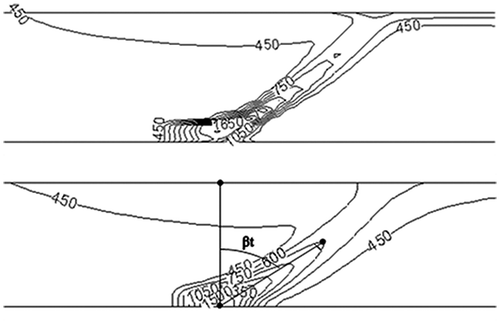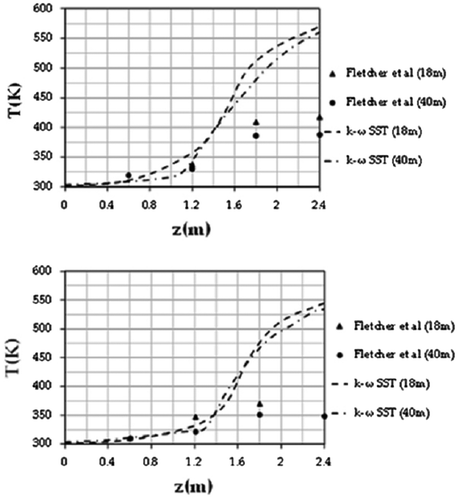Figures & data
Table 1. Coefficients of Equation 1 and constants values
Table 2. Cases data and calculated results
Figure 2. Numerical mesh used for the standard k–ε with wall functions simulations.
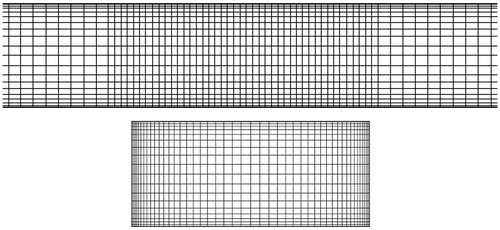
Figure 3. Numerical mesh used for the low-Re k–ω SST simulations.

Figure 4. Temperature isolines through time for case 1.
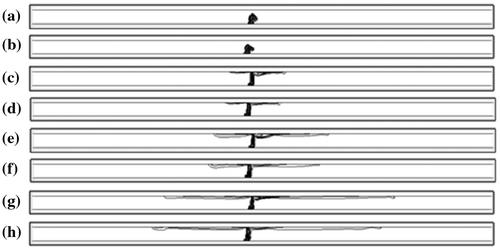
Figure 5. Temperature isolines through time for case 2.
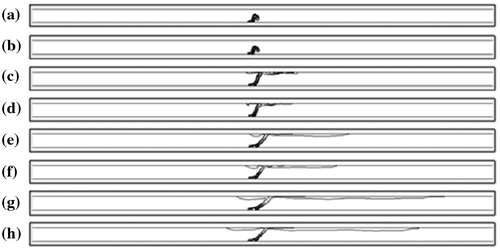
Figure 6. Velocity vectors at characteristic sections and moments for case 1 predicted by the standard k–ε model (left column) and the low-Re k–ω SST model (right column).
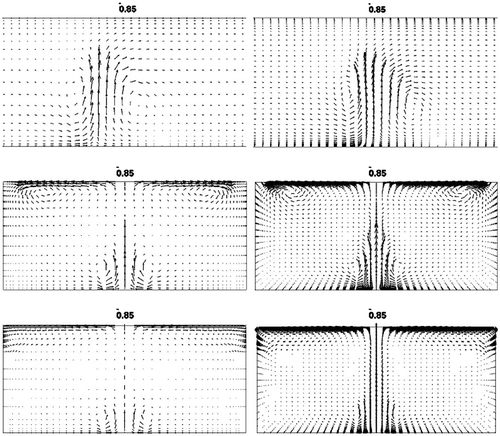
Figure 7. Velocity vectors at characteristic sections and moments for case 2 predicted by the standard k–ε model (left column) and the low-Re k–ω SST model (right column).

Figure 8. Case 2, 20 s after fire breaking.
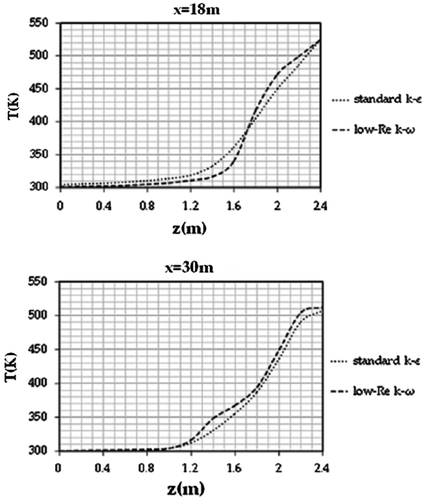
Figure 9. Convergence curve.
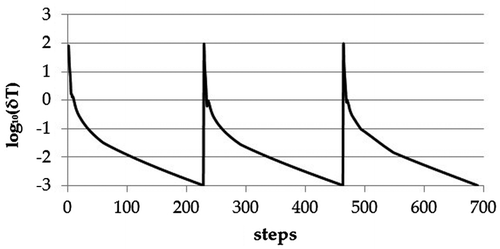
Figure 10. Flame shape comparison for case 1.
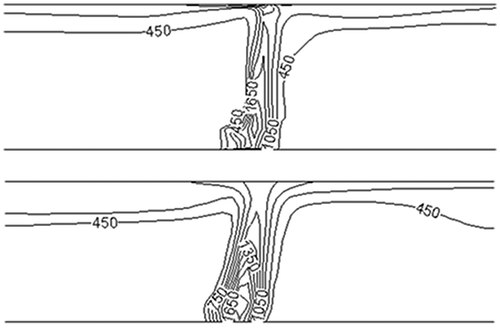
Figure 11. Flame shape comparison for case 2.
